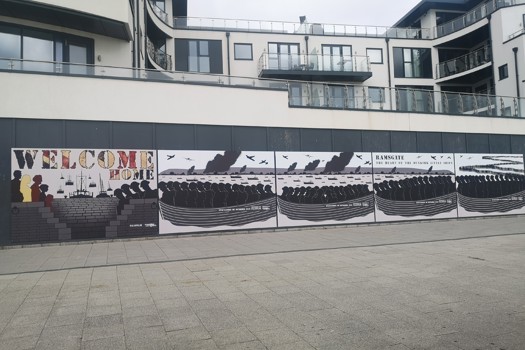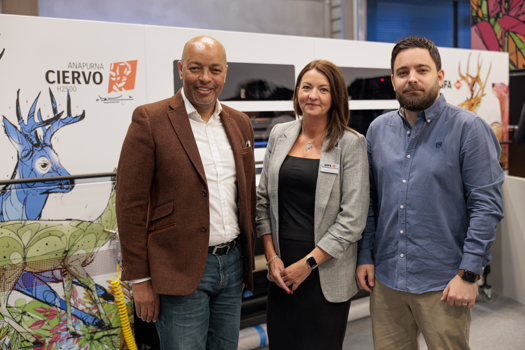Any printer who has explored the secondhand finishing market will know how well Polar machines sell. Primarily known for their standalone guillotines, the German manufacturer also produces a host of materials handling kit, according to Mark Hogan, marketing manager at Heidelberg UK and product manager for finishing products. This includes the firm's RA-4 jogger, which was introduced to the market in the early 1980s.
This automatic machine was predominantly targeted at B1 offset printers for obvious reasons. "You can get away with manually lifting and jogging B2 or B3 work, but it's unproductive to try and do this with B1 where you are having to lift five or six paper stacks per shift," says Hogan.
The ‘A' in the machine's name stands for ‘air removing pressing roller'; this feature roller presses all the air out of the paper to improve the accuracy of the cut. This also means blocks can be formed more easily from the layers.
There are three versions of the machine: the basic R model, the RA and the RAH. On the RAH model, the jogged material is automatically unloaded to the rear into an STR piling-board shelf or onto a conveyor line.
Productivity boost
Hogan explains that the machine boosts productivity considerably. "The jogger can increase productivity by about 40-60% because it's doing everything automatically for you. If you didn't have it you would have to carry out the aligning on the guillotine underneath the knife, which is time spent not cutting."
Materials to be cut are prepared off the cutting machine by the jogger, so it's essentially a non-stop production. While a new block is being prepared, the operator can continue cutting on the guillotine. Once the block is aligned and the air removed, unloading is performed automatically via a gripper system with the automatic jogger positioned directly next to the rear table.
There has been little change since the machine's launch and with new joggers, Heidelberg usually sell them as part of a package. "People either choose to have a pile hoist and jogger, then a second pile hoist or the transomat," says Hogan. A transomat is for printers who don't want to be manually lifting and putting loads onto a pallet.
Polar also launched its LW 1000-4 model in the early 1980s. It's a B1 pile hoist that can handle up to 1,000 kilos. It has an auto-height sensor, so it automatically raises the pile to the same level after the operator has taken sheets off it. Alternatives to the RA-4 include Stanley Press' Diplomat 4 jogger and GAE's Perfecta BSB 5/L.
Up until the downturn, around 30 joggers were being sold a year, along with 50 pile hoists and 15 transomats. "Today, the numbers are half this," says Hogan. "These numbers are for the UK only and are typically sold with, or as retrofits to, 115 and 137 guillotines, but we are also starting to see them with 92 cutters where B2 printers want to increase productivity."
All Polar spares are handled through Heidelberg and 90% are delivered by the next day. There are 30 post-press engineers in the UK and customers have the option of adding one or two years onto the standard one-year warranty. "We are also the first company to offer safety checks on materials handling other than just the guillotine," adds Hogan.
When buying, check the mechanical condition of the machine, as this will give you an indication of how well it's been treated. In terms of value, Mark Sheldrick, managing director at used equipment dealer Direct Press Marketing, adds: "It's appreciated in the secondhand market, so expect to pay 50-60% of the new price for one a couple of years older."
Specifications
Size of table 900x1,150mm
Min height of ream 30mm
Max height of ream 165mm
Table height 860-950mm
Footprint 1,550x970mm
Weight 420kg
Price
New: £22,000
Used: £11,000
Stack lift LW 1000-4: £7,000
Transomat: £40,000
What to look for
Mechanical condition
Cleanliness










